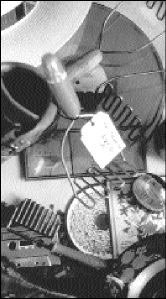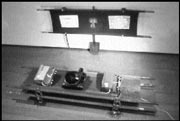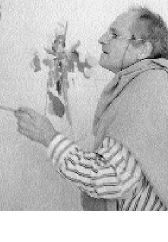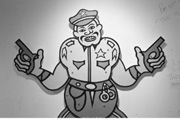CAN ANY OF US, raised on The Brady Bunch and the Children’s Television Workshop, imagine a world without television? Our current culture is enslaved by an overriding interest in watching Regis give away tax-free millions and nubile couples betray each other in a tropical paradise; it’s nearly impossible to conceive of a time when TV was new and magical, an electronic wonder that miraculously opened a window in our living rooms to the rest of the world. But Tacoma Art Museum’s exhibition The New Frontier: Art and Television manages to do just that. It transports us back to the dawn of the Television Era, a time when TV was exquisitely intriguing but almost threatening in its newness. Artists in the early ’60s began to explore this new aesthetic while acknowledging a shift in the relationship between art and life, illusion and reality, activity and passivity.
The New Frontier: Art and Television 1960-65
Tacoma Art Museum ends March 18
Emerging in the early 1960s and creeping stealthily into our everyday lives, TV conquered a populace and has stubbornly persevered, maintaining its status as the dominant purveyor of ideas, desires, and information. It was a major technological example of the era of innovation that John F. Kennedy—the first US president to use television as a political tool—dubbed “the New Frontier.” Since then, dozens of inventions have garnered similar standing—space travel, laser technology, digital imaging, the Internet—but TV, the all-powerful, one-eyed household god, remains.
JFK’s assassination and its aftermath proved that television’s power could produce reality as well as mediate it. Works by Andy Warhol, Dennis Hopper, and Bruce Conner explore TV’s new manipulative role by immortalizing the “Four Dark Days” following the assassination. Conner’s 1963 film REPORT is an uncanny montage of haphazard images—bullfights, the Pope, JFK’s life in office—interspersed with footage of the assassination in short, repeating bites. The insistent repetition of image clips simulates the workings of our memory while alluding to the countless times that those images were shown during that fateful week and incalculable times since.
Tom Wesselmann’s Still Life #28 (1963) incorporates an actual working TV into an otherwise two-dimensional painting. And in a savvy curatorial move, the television in TAM’s installation broadcasts a 24-hour shopping channel, forcing a critical evaluation of available programming as you pass by. The ugliness of our own consumer-driven, entertainment-craving culture encapsulated in a TV set is magnified as it physically penetrates the domain of art and punctures the sacred plane of the artist’s canvas.
IN THE SAME VEIN, James Rosenquist’s television screen-shaped painting, Aspen, Colorado (1966), with its polychromatic “static” lines, acts as both a formal abstraction and a perfectly realistic representation of the familiar boob tube. This intentional blurring of boundaries between artifice and reality points to not only the inherently abstract nature of onscreen images but also the nature of painting itself—a narrative vessel, a conveyor of images—which, like TV, is merely a set of arbitrary color patches or points of light. Rosenquist cleverly poses existential questions about the value of art by asking viewers the value of television; he implies it’s all just a visual game, all simply entertainment.
The television, while a shrine to mass media and consumerism, is also the hearth of the modern household. TV dinners, Sex and the City, and Super Bowl parties have become our modern versions of communal gatherings. Artist Nam June Paik responded to television’s ritualistic power by making sculptural objects from ordinary TV sets and enacting elaborate rituals around them. Lee Friedlander sought to expose television’s omnipotence by depicting a living room setting with an ominous, all-seeing eye filling the TV screen. This surrealist vision turns the viewer’s gaze inside out; instead of sitting comfortably in our own home, watching the world go by onscreen, the television watches us.
If television had never existed, what would replace watercooler swap meets where a Sopranos quip buys you a few minutes of West Wing hijinks? Even though we know TV sucks time and intellect, burns no calories, and brainwashes us to buy things we don’t really need, we can’t tear ourselves away. It’s a love-hate thing; we worship the blue-faced god, knowing it’s a devil in disguise. In the same way, artists in The New Frontier exalt TV as an exciting new medium while reacting to the sudden intrusion of this pervasive, homogenizing force.








